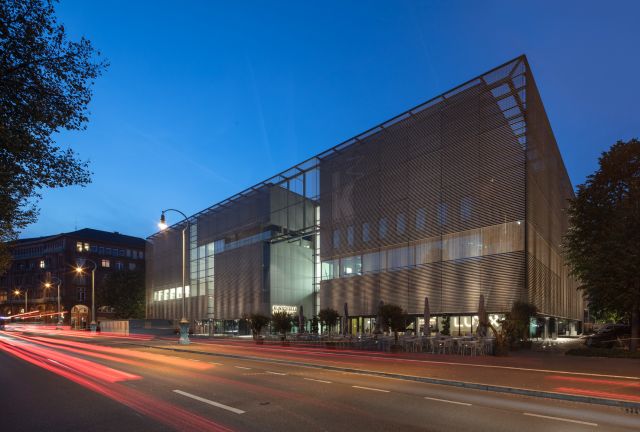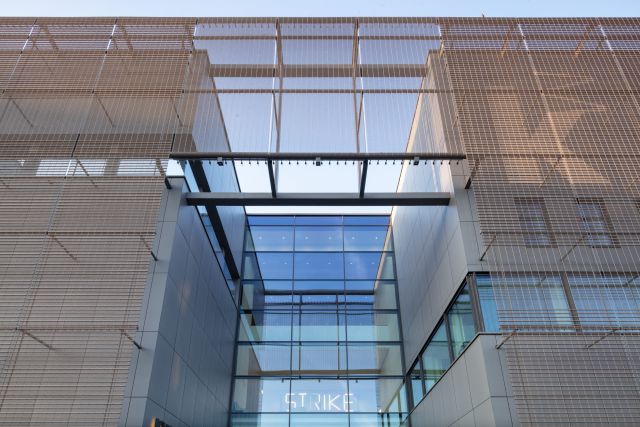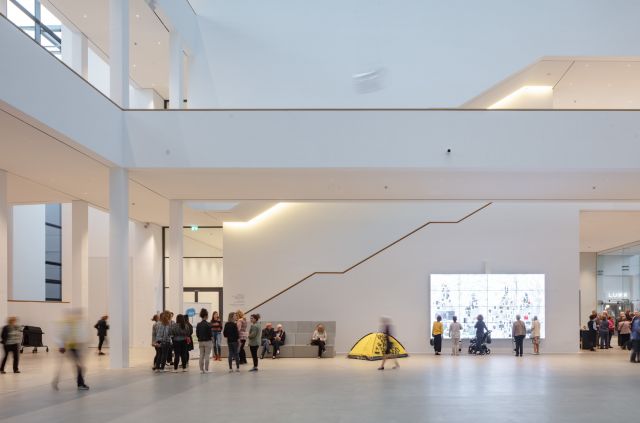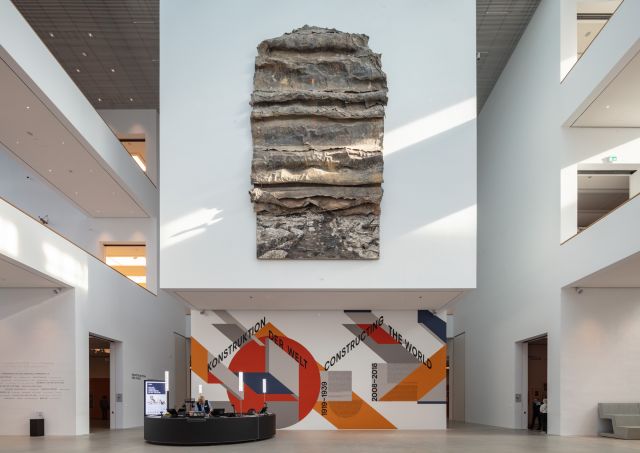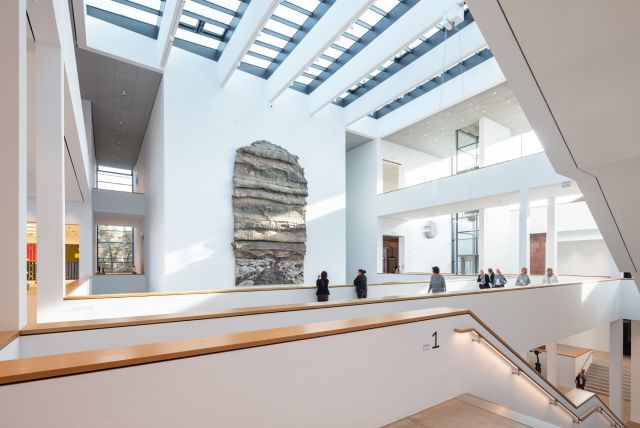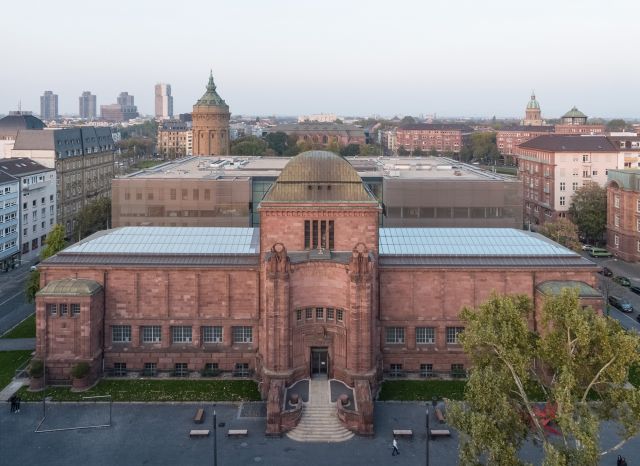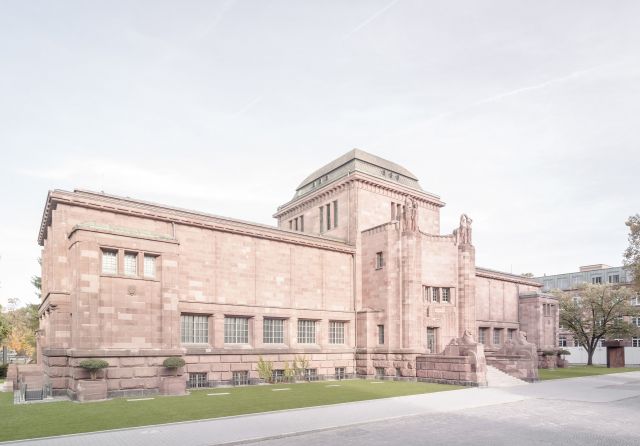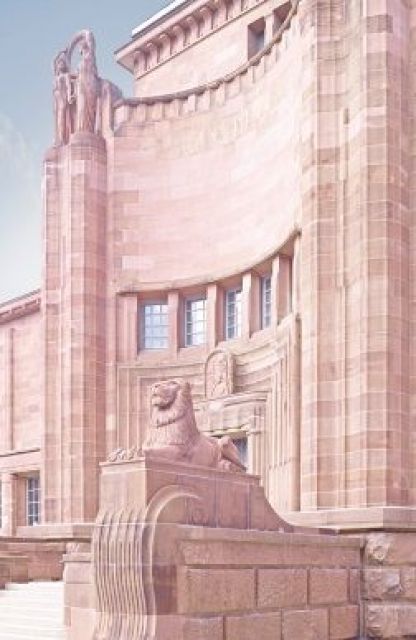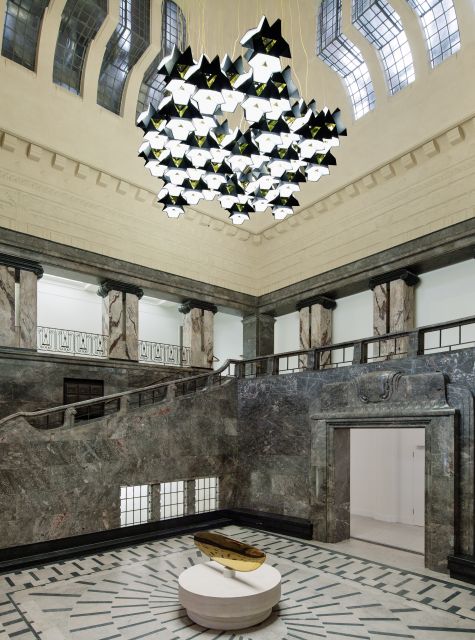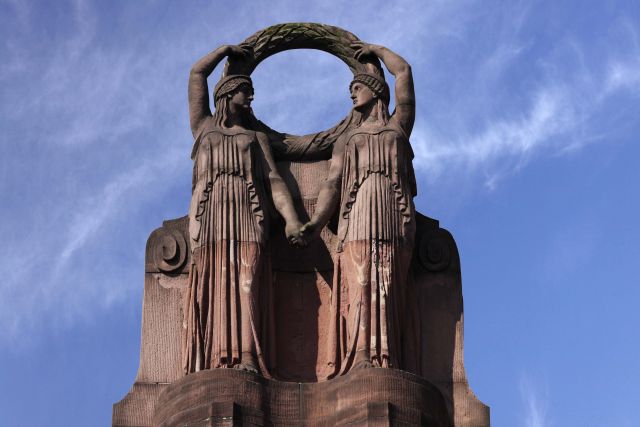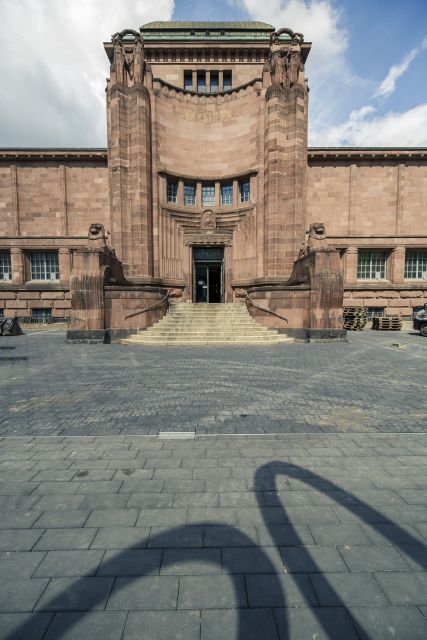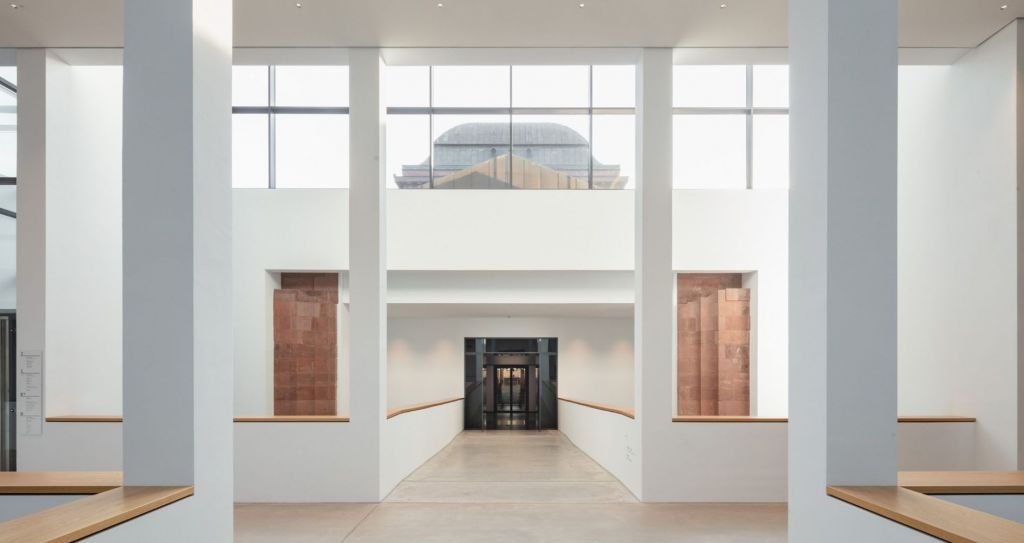
Impressive building complex
In addition to outstanding art, visitors to Kunsthalle Mannheim can always enjoy impressive architecture: the historically evolved complex on Mannheim's most beautiful square, Friedrichsplatz, includes Hermann Billing's art nouveau building from 1907 and the Hector Building by the Hamburg-based firm gmp - by Gerkan Mark und Partner, completed in 2017. In total, the Kunsthalle provides 5,700 square metres of exhibition space.
The Hector Building
The Hector Building was designed by gmp - by Gerkan, Marg and Partners. This globally active architectural firm based in Hamburg won the international competition in 2012 with its concept of a "city within the city". Basic elements of the city such as house, passageway, square and bridge are the guiding principles of the new architecture. The large-scale project was made possible by outstanding private engagement as well as by the Kunsthalle Mannheim Foundation. SAP co-founder Dr. h.c. Hans-Werner Hector and his wife alone donated 50 million euros.
The Hector Building provides a total usable floor space of around 13,000 square metres. The exhibition rooms in this part of the Kunsthalle cover just under 3,500 square metres. The largest room is the daylight atrium, which is topped by a glass roof at a height of 21 metres and measures around 700 square metres. A total of 13 exhibition spaces, so-called cubes, are grouped around this focal point of the museum. They range between 250 and 450 square metres in size. 1,000 to 1,450 square metres of these are available for special exhibitions. Nine cubes are used primarily to present the collection in changing constellations. These include rooms for Édouard Manet ("The Execution of Emperor Maximilian", 1868-69), William Kentridge and Anselm Kiefer as well as the display depot. The diverse exhibition areas are supplemented by a roof terrace beneath open skies.
13,000 cubic metres of concrete and over 2,000 tons of structural steel were used for the shell of the building. The bronze-coloured metal mesh "Tigris", which is unique world-wide and envelops the building, was custom-made from stainless steel wires, tubes and four-chain wire rope.
The Billing Building
The art nouveau building by Karlsruhe architect Hermann Billing was opened on 1 May 1907. It was facilitated by Henriette Aberle (1847-1901), who had already bequeathed 200,000 marks to the city in 1901 "for the erection of a building for a municipal art collection". An additional grant of 350,000 marks came from the city; Kunsthalle Mannheim was initially built as an exhibition hall before it was put into operation as a museum for the municipal art collection in 1909. The building has two wings, and Billing also designed an imposing entry zone, above which a domed hall rises. Revolutionary for the time were the windowless walls on the upper floor. The exhibition rooms were lit by skylight ceilings. From 2010 to 2013, the Billing building was completely renovated. Above all, an energetic renovation of the structure enabled unrestricted links to the new building. Today, the art nouveau section provides 1,200 square metres of exhibition space.
